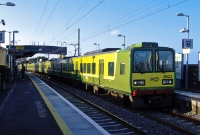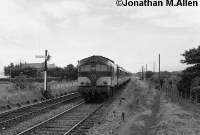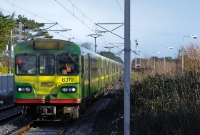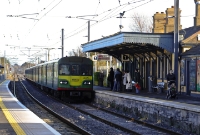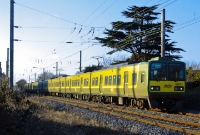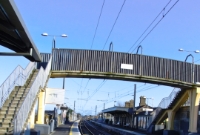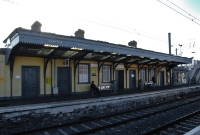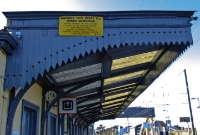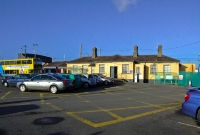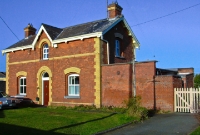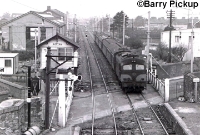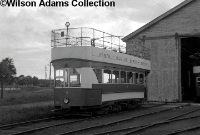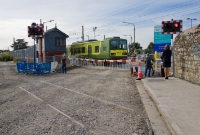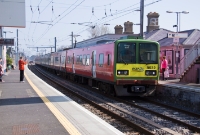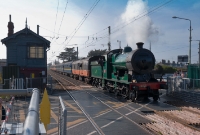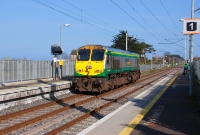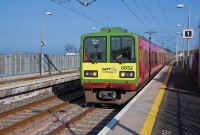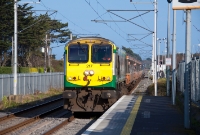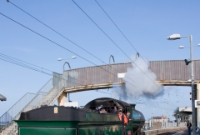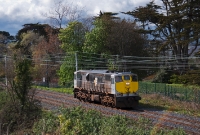Sutton
Sutton & Baldoyle Station, generally known just as 'Sutton', was the only intermediate station built on the Dublin & Drogheda Railway's branch from Howth Jct to Howth in July 1844. Following the Great Northern Railway takeover in 1876, the company added the present station building complete canopy on the down platform, along with a covered station footbridge (replaced in 1983). Adjacent to the station level crossing is the now redundant GNR built signal cabin, disused since the replacement of mechanical signalling on the line as part of the DART scheme in 1983.
The typical GNR station masters house at Sutton also survives, located by the car park. Sutton was also the starting point of the GNR's Hill of Howth Tram, which began operating from Sutton to the Summit and down to Howth in 1901. The tram sheds and associated buildings were located south of the level crossing. Today, only the former electric power generator building remains, the Hill of Howth tram having been closed by CIE in 1959.
The typical GNR station masters house at Sutton also survives, located by the car park. Sutton was also the starting point of the GNR's Hill of Howth Tram, which began operating from Sutton to the Summit and down to Howth in 1901. The tram sheds and associated buildings were located south of the level crossing. Today, only the former electric power generator building remains, the Hill of Howth tram having been closed by CIE in 1959.



